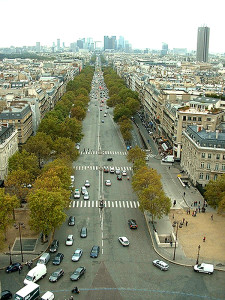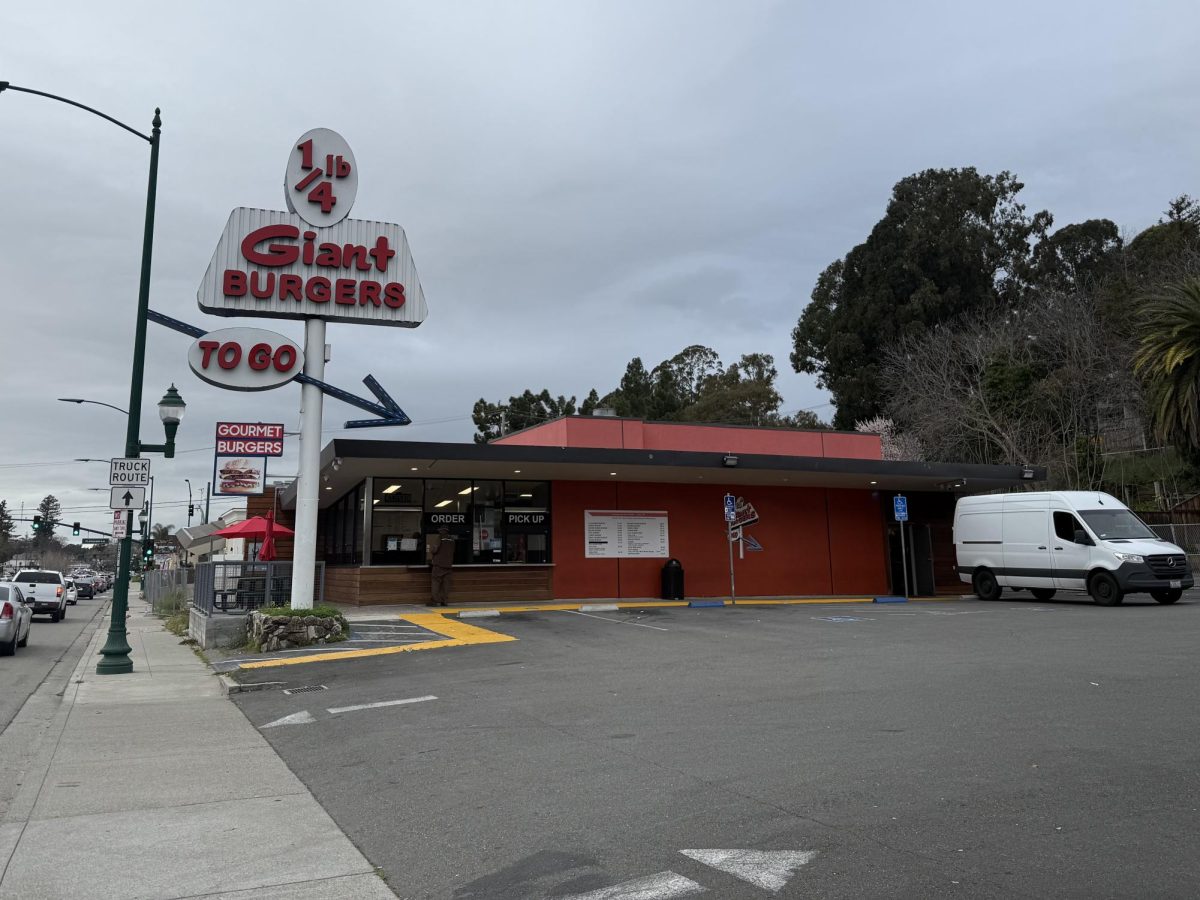
Paris, where the layout of streets may
cause pedestrian car accidents.
With almost ten times more pedestrians injured in Paris, France, than in San Francisco, Calif., the bloody images of these incidents are sending the mayors of both cities to the drawing board to fix the problem.
Some 8,327 pedestrians were injured in Paris in 2012 by way of vehicle collisions, according to Traffic Safety Officer Laure Condomines, while 876 pedestrians were injured by vehicle collisions in San Francisco during the same year, according to the San Francisco Police Department.
More than 2.2 million Parisians live on a 40.7 square mile area, while 812,826 San Franciscans live on a 46.9 square mile area.
While congestion may play a role in these accidents the mayors of both cities, which are tourist destinations for millions of people each year, are taking steps to safeguard pedestrians.
More than 10,000 pedestrians were injured in 2008 in Paris, resulting in the launch of a traffic safety advertising campaign by Mayor Bertrand Delanoe. Although the number of accidents has decreased, the streets of Paris remain among the most dangerous in Europe.
Meanwhile, in San Francisco, Mayor Edwin M. Lee decided to push for more strictly enforced speed limits around schools and senior centers, beginning this month.
“Research has shown that adhering to speed limits reduces injuries and deaths, especially among seniors and youth who are at high risk,” said Barbara Garcia, director of health of San Francisco, in an interview. “We are pleased to be able to work closely with the Police Department to increase traffic enforcement and educating drivers to reduce their driving speed around schools and seniors centers to create a safer environment and, ultimately, save lives.”
The Traffic Safety Association of Paris claims that the principal cause of pedestrian injuries are the pedestrians themselves: bad street crossings and crossing while the light is green for cars. The fine for jay walking in Paris is four Euros; approximately six dollars.
But the violation is so frequent, Laure Condomines says in an interview, “It would be useless to book an offender each time an infraction occurs.”
Pedestrians might not be the only ones to blame; the layout of Paris’ streets may also be at fault and partly explain the gap between the two cities.
While many of San Francisco’s streets are well-ordinate, Paris’ streets are configured in circular round-abouts.
“Paris authorities do everything they can to make the circulation in Paris safer,” Laure Condomines said. “But it is really expensive to fix all the slightly damaged areas.” According to Paris City Hall, 13 percent of Paris streets are slightly damaged.
The damage only further exacerbates the problems found in the layout of the city streets.
“On freeways cars can go fast (when it’s not at gridlock) because those roads were designed for such uses; city streets and roads not originally designed for automobile use should be designed so that cars have to slow down. Then cars are tamed,” said Carlton Reid, author of Roads Were Not Built for Cars, in an interview.
“Clearly, a great many new roads were designed solely for motorcars after the 1930s, but this didn’t mean the old roads or streets were left clear of cars: far from it. Cars took over everything!” added Reid.
The intersection of these design flaws and dangerous practices throughout the city have led some to strongly advise against driving in Paris.
“Don’t drive in Paris! Unless you have experience driving in France before, if not then if you’re religious at all, you’d better say your prayers,” says Sue Galrick, a native Californian who has been living in Paris for two years. “Remember a Frenchman’s attitude is that he has a little voice in his head telling him that he is always right! Traffic lights are to be treated as ‘How dare this colored light bulb tell me I cannot pass?’ In short be very, very, careful!”
A report about pedestrian fatalities in Europe, from the Department of Transportation Planning and Engineering at the National Technical University of Athens, has recommended better overall visibility for drivers, pedestrians, and road signs.
“European countries should improve Road User Perception, in order to improve visibility and facilitate timely action both for drivers and pedestrians, especially as regards children and the elderly: making pedestrians more visible, improving overall visibility for drivers, making vehicles more visible and noticeable, making signing and marking more visible or comprehensible,” reads the report.
European countries should educate road users, including, “Educating road users in general, educating drivers (e.g. driver training, rewarding safe drivers, changing behavior of younger traffic participants towards the elderly), educating pedestrians, [and] educating special groups of pedestrians and enforcement of police controls,” recommends the report.
The objective of the report was to create an overall picture of pedestrians’ road safety in European countries, to identify factors associated with increased pedestrian fatality risk, and to propose countermeasures for the improvement of pedestrians’ road safety in Europe.
Similarly, a study from the University of Berkeley’s Safe Transportation Research and Education Center concludes that “behaviors such as speeding, yielding, jaywalking, and traffic control violations may have an effect on pedestrian safety.”
The SafeTREC study, which monitored 81 intersections, also showed that pedestrian injuries occurred mostly at intersections with more right-turn-only lanes, nearby non-residential driveway crossings, and commercial properties. In addition, it underlined that a large percentage of children living near intersections are involved in traffic injuries.
The research aimed to show “how specific roadway intersection characteristics (such as number of lanes, roadway crossing width, and traffic volume) are associated with pedestrian crashes.”
California has one of the nation’s worst pedestrian fatality rates, according to the National Highway Traffic Safety Administration, an organization established by the Highway Safety Act of 1970 to help prevent crashes.
California’s 599 pedestrian fatalities in 2010 represented 22.1 percent of the fatalities in California and pedestrian fatalities in the state numbered 1.6 for every 100,000 people in the population, according to a study by the National Highway Traffic Safety Administration. The national rate that year was 1.38 for every 100,000 people in the population, according to the same study.
The struggle to secure pedestrian safety is still ongoing, evidenced by the death of 72-year-old Eireen Barrett last month. Barrett was killed in the crosswalk of Lake Merced Blvd. in San Francisco when she was hit by a MUNI bus.



















